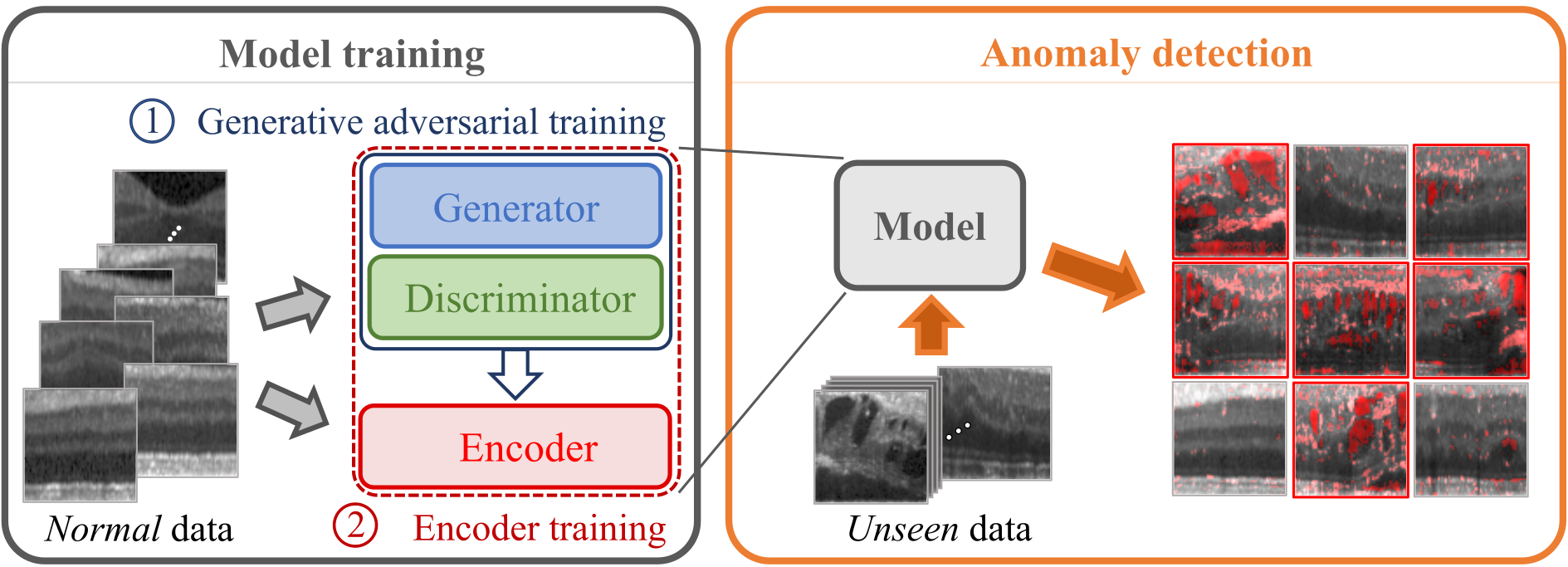f-AnoGAN: Fast unsupervised anomaly detection with generative adversarial networks
Code for reproducing f-AnoGAN training and anomaly scoring presented in "f-AnoGAN: Fast Unsupervised Anomaly Detection with Generative Adversarial Networks" (accepted manuscript). This work extends AnoGAN: "Unsupervised Anomaly Detection with Generative Adversarial Networks to Guide Marker Discovery".
Referencing and citing f-AnoGAN
If you use (parts of) this code in your work please refer to this citation:
Schlegl, T., Seeböck, P., Waldstein, S.M., Langs, G., Schmidt-Erfurth, U., 2019. f-AnoGAN: Fast Unsupervised Anomaly Detection with Generative Adversarial Networks. Medical Image Analysis 54, 30-44. DOI: https://doi.org/10.1016/j.media.2019.01.010
Prerequisites
- Python (2.7), TensorFlow (1.2), NumPy, SciPy, Matplotlib
- A recent NVIDIA GPU
f-AnoGAN building blocks
wgangp_64x64.py: Training a 64x64 WGAN architecture yields a trained generator (G) and discriminator (D). Modifies and extends (includingtflib/) Ishaan Gulrajani's Tensorflow implementation of the WGAN-GP model proposed in "Improved Training of Wasserstein GANs" (GitHub).z_encoding_izif.py: Training the izi_f encoder (E) based on the trained WGAN model (G and D). Please refer to the full paper for more detailed information.anomaly_detection.py: Code for anomaly scoring utilizing the trained G, D, and E.
Setting (image) paths
Image paths are set in tflib/img_loader.py. Images should be provided as "*.png" files structured in the following way:
trainset_path= "path-to-folder-holding-normal-training-images"trainset_val_path= "path-to-folder-holding-normal-validation-images"test_normal_path= "path-to-folder-holding-normal-test-images"test_anom_path= "path-to-folder-holding-anom-test-images"
Please edit that file to specify the paths to your datasets.
Misc
Results of related research work are provided at CIR.
